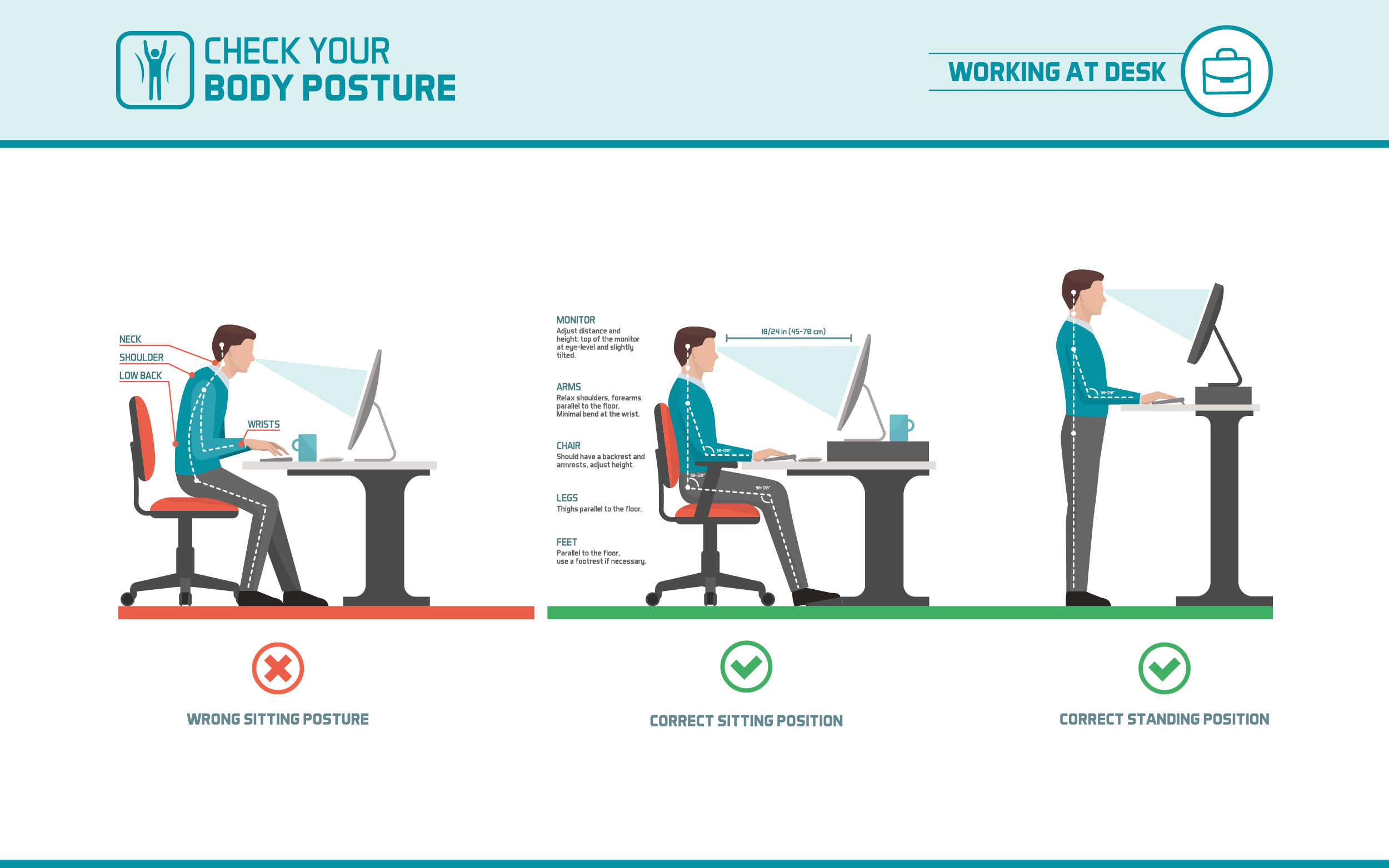Working from a desk is an extremely common cause of neck and back pain, often because you adapt to your workstation rather it adapting to you. Signs of this may include, the computer monitor being too far away, too close, too dim. This takes away having ‘good posture’. An average human head weighs just about the amount of a standard bowling ball! When your neck is bent, the head exerts a lot of pressure on the neck. Imagine the strain it is having on you! This then can lead to headaches, joint strains and even possible breathing restraints. This is why redesigning your work-space to adapt to you is necessary. There are many ways to alleviate these problems such as;
Have you got the correct chair?
- Making sure your chair is at the correct height for you is important, it is better to have a slight recline in your posture instead of being at a 90 degree angle.
- Your feet should touch the ground fully.
- Sometimes putting a small pillow at the bottom of your chair helps you keep your posture correct instead of curving the spine (in other words, hunching over)
Is your desk at a correct height?
- Adjust your desk correctly or even your chair, so your arms are not pointing upward, rather slightly downward, so that there is no bend in the wrist.
Is your computer at the correct height, distance and lighting suited to you?
- Adjust your computer screen so that your eyes are at level with the screen,
- Move the screen towards you or further away so that it is easier to read the screen.
- Increase the font size perhaps, so you are not leaning in, or squinting at the screen.

Another really positive idea to add to your work environment is setting a timer for every 30 minutes, to stand up and take a walk around the office, do a few little stretches, or even physically deliver a message, rather than email (if it isn’t too important). Some offices have also implemented standing workstations which has been proved to be very beneficial, so perhaps it is something you could suggest at your next meeting.
Bringing these ideas into consideration may help you in the future and relieve a lot of your common issues.
